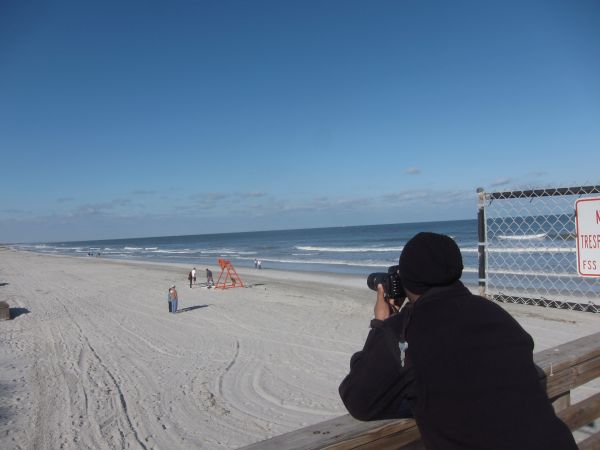Summer is just around the corner, folks. As the sun decides to become a more active member of our daily lives, we — especially those of us with nice cameras and itchy shutter-release fingers — feel an increasing compulsion to awaken from our lazy autumn habits and venture outside.

And if you’re going to be outside, you might as well take a camera and document what you see. Being outside in well-lit environments offers near-limitless potential for memorable photographic opportunities.
Since I’m getting my gear and my mind prepped for some summer adventures, I thought I might as well pass along a few tips for summer photography to you for consideration as you, too, get ready for the summer.
Check Out the Local Events
When the weather warms up, people start going outside more to soak up some sunshine and hang out with their friends. In response to this, chances are good that your town will be hosting lots of outdoor events, such as music concerts and festivals, carnivals, food festivals, local holiday celebrations and tons of other such events.
A lot of these events are free to attend, which is always a plus. And people are generally more amenable to having their picture taken when they’re having a good time. So check local event calendars regularly to see if anything is happening that sounds like fun.
Explore New Territories
Summer, with its warm weather and bright sunshine, is known to inspire in some people a wanderlust or a need for some adventure. If you feel this compulsion, embrace it.
Perhaps there’s a park or a set of nature trails you’ve been interested in walking. Or maybe it’s time to load up your camera, along with a cooler full of lunch, into your (or a friend’s) car and head out on a road trip. Summer is a great time to explore the unknown.
Be Careful at the Beach
And we’re not just talking about watching out for jellyfish and sand-kicking bullies. While the beach is ripe with photographic potential, it is also full of hazards that can destroy your camera.

Water (especially salt water, if you’re going to the ocean), sand and dirt are mortal enemies to cameras. If you take a DSLR, try to pick one lens and stick with it. Swapping lenses amidst a windy expanse of sand and water is just begging for trouble.
If you plan on spending a lot of time at the beach over the course of the summer, you might consider getting a smaller waterproof camera just for the beach. While you might not get the most high-resolution images possible, you also avoid ruining your nice, expensive DSLR. And really, point-and-shoot cameras have evolved into tiny powerhouses. So you might not be making as big a cut in photo quality as you think.
Some Considerations for Gear
A few bits of extra gear could go a long way toward improving your summer photography experience.
One such bit of gear is a monopod. If you’re not familiar, a monopod is a lot like a tripod, but with — you guessed it — only one leg. Monopods are, as you might guess, not as stable as tripods are, but they do offer some advantages. The primary advantage is mobility. Moving around with a monopod is much easier than with a tripod. They’re also smaller and lighter, making them easier to transport and employ.
If a monopod doesn’t appeal to you, you could always go with a simple string-and-washer hack. This technique is explained in the video below.
When it comes to lenses, summer time is a great time to dust off your prime lenses if you haven’t been using them. I’ve mentioned before in other posts that I’m a believer in adding certain restrictions to yourself in order to push yourself to grow and advance as a photographer.
So if you’re going to be out and about and walking around anyway, you have a good opportunity to get friendly with your photographic subjects.
Also, invest in a polarizing filter for your lens. This will help cut down on glare, and it makes your blues, such as the blues of the ocean and the sky, appear deeper.
Landscapes
[Tweet “Summer is also an excellent time to get some great landscape photographs”]
With the sun providing so much beautiful natural light, you can close your aperture down nice and tight and get some sharp, highly detailed landscape shots. If you’re curious about landscape photography but don’t know much about it, take a look at our guide.
Ideal Times for Shooting
Sunlight, as any photographer can tell you, is ideal light for taking great photos. But there is such a thing as too much sun. During the summer months, some times during the day are better than others for shooting.
Generally speaking, midday is to be avoided when shooting outdoors. The bright afternoon sun can easily wash out your photos. Also, when the sun is high overhead, it casts small shadows that are often hard to discern. Shadows provide your photos with contrast and form. Having some shade is a good thing.
Adjusting for the Sun
As we mentioned above, the summertime sun can get to be a bit much at times. So if you do find yourself with an overabundance of light, or if you’re having trouble finding a balance between exposing for darker and lighter spots at the same time, try underexposing your photos. If your photos are washed out, fixing them later with editing will be much more difficult than if they’re darker than you’d like.
And if you haven’t started shooting in RAW yet, this might be a good time to give it a try. RAW files capture much more visual information, so they offer the most flexibility when you’re editing them later. For more information, check out our guide on RAW versus JPEG.
These are just a handful of considerations to make while getting prepped for summer. What are your favorite situations or events to shoot in the summer? How do you approach your outdoor photographic endeavors? Let us know in the comments!









I love the summer photography.These tips will help me more.